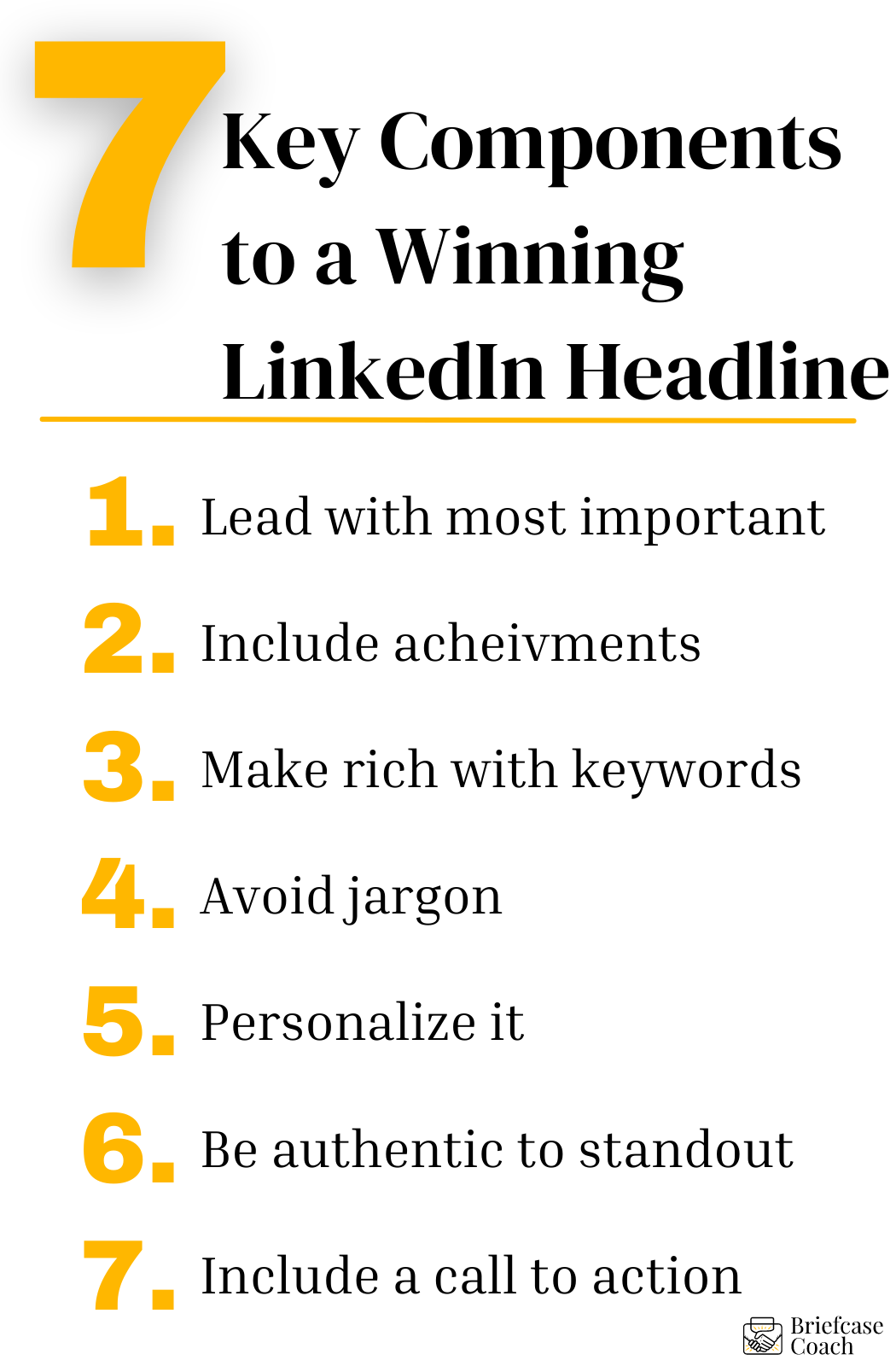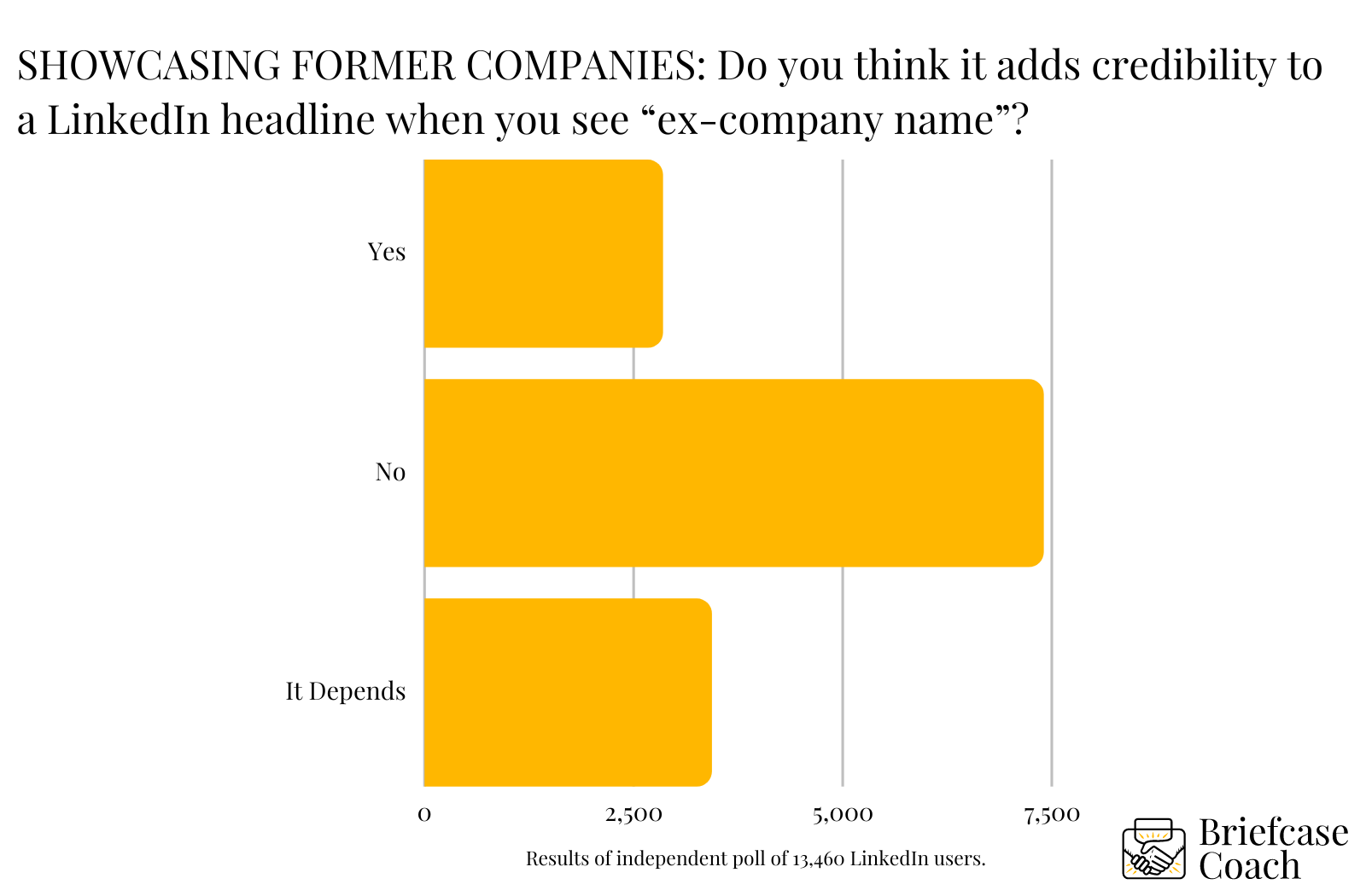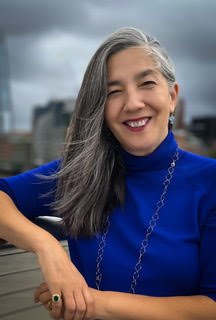
Write a LinkedIn Headline that Stands Out
First impressions are important, even on social channels like LinkedIn. Imagine you’re meeting someone for the first time, and they give you a weak, half-hearted handshake. Your first impression is not likely to be overwhelmingly positive, right? Believe it or not, your LinkedIn headline holds the same power as a handshake. It’s the first thing people on the platform will see and the first way they will experience you. That’s why it’s critical to learn how to take it from forgettable and generic to distinctive and memorable.
The LinkedIn Headline – Why It’s So Important
In addition to being one of the first things people will see when they look at your profile, your headline also represents your best opportunity to convey your unique value (in only 220 characters!) to your target audiences.
Whether you are connected to someone or not, “your headline is visible in every comment you make,” says LinkedIn expert Kati Harris. “This allows you to become visible to wider networks and expand your reach through commenting on others’ posts. It is also the first thing people see when you send a connection request or apply for a job through LinkedIn.”
In addition, a headline shows in LinkedIn search results, “People You May Know” section, recommendations, and messages.
The headline can also help to keep people reading the rest of your profile. On LinkedIn, you have a 3-4 line text preview, so the goal is to pique readers’ curiosity enough to get them to continue reading below the headline.
If you feel intimidated at the thought of writing your headline or know yours isn’t as effective as it could be, you are not alone. So where should you begin? There are several things to consider when writing your LinkedIn headline.
Your LinkedIn Headline: A Personal Branding Opportunity
Think of your headline as a personal branding opportunity.
Earlier in the platform’s existence, people simply listed their job titles in their headlines. Recently, though, John Nemo, an expert in LinkedIn lead generation, has seen a shift. “People now are moving towards more authentic value-driven headlines. Professionals are focusing on showcasing their unique skills, value propositions, and personal brands, rather than simply listing their job titles or using buzzwords.”
Nemo notes that the headline plays an increasingly important role in personal branding and discoverability. “As more professionals use the platform, the importance of standing out and effectively communicating your value proposition has become more crucial than ever,” he says.
Showcase Your Value Proposition
But what if you haven’t yet identified your value proposition? Career expert Hannah Morgan describes your Unique Value proposition (or UVP) as a personal slogan that helps people understand who you are and the value you deliver. According to Morgan, the best personal brand statement examples contain three important pieces of information:
- What you do or what problem you solve
- Who benefits from this
- How you do it uniquely
Come up with these three ingredients and you’ll be well on your way to crafting a meaningful, authentic LinkedIn headline.
7 Essential Ingredients for Your LinkedIn Headline

So, once you have figured out your value proposition, what else do you need to do to create a killer headline? Here are the top 7 things to keep in mind when crafting your LinkedIn headline:
1. Lead with what’s most important. “Of the 220 characters available to you, only the first line or so shows (50-70 characters) when you comment so lead with what you think is most important,” advises LinkedIn coach Sandra Clark.
2. Add achievements. Adding in 3-4 solid achievements enhances your social credibility and can back up any statements in the first part of your headline, according to Houston Golden, author of The LinkedIn Bible.
3. Use keywords. Be sure to include keywords to improve your ranking and searchability. “Especially if you’re job hunting, research similar jobs and include the most common keywords,” suggests Harris. “Stick to words that your target audience will use to search for you (or the position you aspire to get).” Briefcase Coach has additional advice on keyword usage in headlines here.
4. Keep words simple and avoid jargon. Avoid hyphenated descriptions like world-class or leading-edge. They are cliched and take up valuable space (when there is little to spare).
5. Personalize. Go beyond your job title or your company. “Have a tagline,” suggests Danielle Hughes, Chief Personality Officer of More Than Words Marketing. “Include at least one memorable hobby or passion. It helps drive connection and builds trust.” Golden suggests ending headlines with something fun or playful. “People are disarmed with fun in the same way that they are disarmed with humor. Adding something fun makes you human and relatable.”
6. Stand out. Remember Apple’s slogan “Think Different”? Harris advises that not be afraid to do the same with your headline. “Whatever everyone else is doing, do the opposite. Your job is to stand out.”
7. Use CTAs. Including a call-to-action in your headline can also inspire viewers to take action. Harris likes to include a CTA in her headline whenever she has an upcoming offer such as a LinkedIn masterclass. She then changes the first half of her headline back to the usual one after the masterclass is over.
Example LinkedIn Headlines
In this example, John Smith is a VP of Strategy looking to make a move into Fintech. This headline captures his skills, interests and abilities as well as showcases what skills aligns with his target position.

In the next example, Mary Jones is a VP of Marketing looking to land her first CMO position. She positions herself as a strong leader. She also showcases an award won for recognition of her work in the field as well as strong marketing skills built over a long industry career.

Former Job Titles: When To Use Them (Or Not)?
Recently, there has been a trend of LinkedIn members mentioning past jobs in their headlines. (for example, Chief Marketing Officer at XX Startup | ex-MailChimp CMO | Growth Strategist and Branding Expert)

Briefcase Coach’s Sarah Johnston polled LinkedIn readers about whether they thought this was a good idea. While the majority didn’t feel like it added credibility to include former employers, some saw value in the additional information. They believe mentioning a prestigious former job would entice people to read more of their profile. Others felt that the experience section of your LinkedIn profile includes the same job history, making it unnecessary.
Briefcase Coach believes that mentioning former jobs in a headline probably only makes sense for leaders who have moved on to lead an unknown or “on the rise” startup for credibility.
Your LinkedIn Headline Will Evolve
Just as you, your business and goals evolve, so, too, can your LinkedIn headline. After all, the headline isn’t written in stone and it will naturally change as you progress in your career. If you are a recent graduate looking for your first job, for example, your headline will be very different from that of a seasoned executive seeking to attract the attention of recruiters.
Similarly, your niches might expand or change over time and your headline will naturally reflect those changes. One word of caution, however. Don’t tinker with your headline too often, adding or subtracting major skill sets or areas of focus. This has the risk of making you look inconsistent.
To Template or Not to Template
Josue Valles, the founder of Curation Labs, recently made a carousel post on LinkedIn highlighting 28 different headline templates inspired by creators in different industries. What was striking was the variety of creative ways in which different creators chose to stand out and project their individuality.
Templates are a great tool to use as you begin experimenting with your LinkedIn headline. Just remember that there isn’t any one formula that is key to success. There are as many different ways to write a headline as there are different personalities.
Try to have fun with your headline. Explore different approaches and get feedback from people you trust, until you hit on that unique combination of words that conveys your unique personality, experience, and value. Before you know it, you’ll be getting pinged by people on LinkedIn saying that it was your stellar headline that prompted them to contact you.
LinkedIn Headline Do’s and Don’ts
DO:
· Divide your headline into sections using the | character (pipe or bar character)
· Consider playing around with headline generators (but don’t rely on them too heavily to avoid sounding generic).
DON’T:
· Let LinkedIn choose your headline for you. You should always try to craft your own that reflects your unique attributes and value.
· Use jargon or overstuff your headline with keywords.
· Use emojis if you are a seasoned professional.
· Let the perfect be the enemy of the good.


